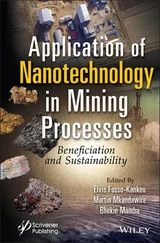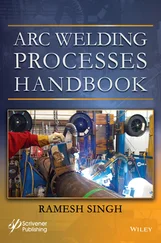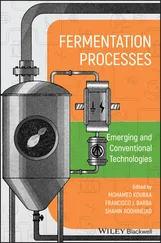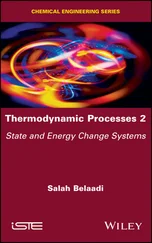Isotopic Constraints on Earth System Processes
Здесь есть возможность читать онлайн «Isotopic Constraints on Earth System Processes» — ознакомительный отрывок электронной книги совершенно бесплатно, а после прочтения отрывка купить полную версию. В некоторых случаях можно слушать аудио, скачать через торрент в формате fb2 и присутствует краткое содержание. Жанр: unrecognised, на английском языке. Описание произведения, (предисловие) а так же отзывы посетителей доступны на портале библиотеки ЛибКат.
- Название:Isotopic Constraints on Earth System Processes
- Автор:
- Жанр:
- Год:неизвестен
- ISBN:нет данных
- Рейтинг книги:4 / 5. Голосов: 1
-
Избранное:Добавить в избранное
- Отзывы:
-
Ваша оценка:
- 80
- 1
- 2
- 3
- 4
- 5
Isotopic Constraints on Earth System Processes: краткое содержание, описание и аннотация
Предлагаем к чтению аннотацию, описание, краткое содержание или предисловие (зависит от того, что написал сам автор книги «Isotopic Constraints on Earth System Processes»). Если вы не нашли необходимую информацию о книге — напишите в комментариях, мы постараемся отыскать её.
Volume highlights include: Isotopic Constraints on Earth System Processes
The American Geophysical Union promotes discovery in Earth and space science for the benefit of humanity. Its publications disseminate scientific knowledge and provide resources for researchers, students, and professionals.
Isotopic Constraints on Earth System Processes — читать онлайн ознакомительный отрывок
Ниже представлен текст книги, разбитый по страницам. Система сохранения места последней прочитанной страницы, позволяет с удобством читать онлайн бесплатно книгу «Isotopic Constraints on Earth System Processes», без необходимости каждый раз заново искать на чём Вы остановились. Поставьте закладку, и сможете в любой момент перейти на страницу, на которой закончили чтение.
Интервал:
Закладка:
62 Wu, H., He, Y., Teng, F.‐Z., Ke, S., Hou, Z., & Li, S. (2018). Diffusion‐driven magnesium and iron isotope fractionation at a gabbro‐granite boundary. Geochimica et Cosmochimica Acta, 222, 671–684. https://doi.org/10.1016/j.gca.2017.11.010
63 Yogodzinski, G., Vervoort, J., Brown, S. T., & Gerseny, M. (2010). Subduction controls of Hf and Nd isotopes in lavas of the Aleutian island arc. Earth and Planetary Science Letters, 300(3–4), 226–238. https://doi.org/10.1016/j.epsl.2010.09.035
64 Zhang, Y. (1993). A modified effective binary diffusion model. Journal of Geophysical Research: Solid Earth, 98(B7), 11901–11920.
65 Zhang, Y. (2010). Diffusion in minerals and melts: theoretical background. Reviews in Mineralogy and Geochemistry, 72(1), 5–59. https://doi.org/10.2138/rmg.2010.72.2
66 Zhao, X., Zhang, Z., Huang, S., Liu, Y., Li, X., & Zhang, H. (2017). Coupled extremely light Ca and Fe isotopes in peridotites. Geochimica et Cosmochimica Acta, 208, 368–380. https://doi.org/10.1016/j.gca.2017.03.024
3 Calcium Isotope Constraints on Recycled Carbonates in Subduction‐Related Magmas
Justin I. Simon
Center for Isotope Cosmochemistry and Geochronology Astromaterials Research and Exploration Science Division, NASA Johnson Space Center, Houston, Texas, USA
ABSTRACT
Calcium isotope ratios are readily mass‐fractionated by low‐temperature depositional processes that can be recorded in sedimentary rocks and, therefore, have the potential to track distinct geochemical signatures of recycled materials in mantle‐derived igneous rocks. In this study, I report calcium isotopic compositions for well‐characterized lavas from the Central American volcanic arc that exhibit a range of trace element and radiogenic isotope signatures that have been used to indicate variable amounts of subducted marine carbonate and hemipelagic sedimentary rocks, fresh carbonatite lavas from Oldoinyo Lengai Volcano, Tanzania, and an intrusive carbonatite clast erupted 12.8 ka from the Laacher See Volcano, Germany. I observed no calcium isotope evidence for recycled sedimentary rocks in the Central American arc magmas or in the Oldoinyo Lengai carbonatite volcanic rocks. They all exhibit isotopic compositions similar to rocks dominated by a primitive, mantle‐like, bulk silicate Earth (BSE) composition. The exception in this work is the calcium isotope composition measured in the intrusive Laacher See carbonatite that is resolvable from BSE (δ 44Ca = 0.0). Although this calcium isotopic signature might be related to ancient carbonate recycling, the magnitude and relatively light calcium isotopic composition (δ 44Ca = –0.4) of this carbonatite could also reflect an origin that involved partial melting of altered lithospheric mantle, from which isotopically heavy Ca‐bearing fluids have been lost. The decoupled signatures between trace elements and their radiogenic isotopes and those recorded by calcium isotope data are important because they likely reflect different sources and processes, and demonstrate that sediment subduction is not a bulk mixing process.
3.1. INTRODUCTION
Understanding the fluxes of carbonate sediment between subducting plates and the overlying mantle wedge and magmatic arc is important because sediment fluxes control mantle heterogeneity and influence the global carbon cycle. In particular, when large amounts of CO 2(as carbonate) are subducted, they affect Earth’s climate (DePaolo, 2004). In this study, I use calcium isotopes to track recycled carbonates in subduction‐related magmas because the global calcium and carbon cycles are linked through carbonate formation.
Traditionally, insights into the differentiation history of the mantle come from radiogenic isotope measurements of oceanic basalts, e.g., DePaolo and Wasserburg (1977), Lassiter et al. (1996), and Stille et al. (1983). These observations can be used to study the origin and evolution of compositionally distinct mantle reservoirs. Subduction processes play an important role in the differentiation of the mantle, as they can transport distinct materials into Earth’s interior. In fact, geochemical and isotopic systems (e.g., Sr, Nd, Pb) have been used to suggest that subducted marine sediments are important to the petrogenesis of ocean island basalts, even when far from any existing plate margin, e.g., Blichert‐Toft et al. (1999), Cabral et al. (2013), Castillo et al. (2018), and Huang and Frey (2005). Accurate interpretation of these mantle signatures is complicated by the fact that both changes in source composition and time can lead to isotopic heterogeneity.
Mass‐dependent stable isotope compositions complement radiogenic isotope signatures because they are not affected by age. Calcium isotope measurements of primitive igneous rocks have the potential to provide a powerful tool to test ideas about the various possible sources of mantle heterogeneity. This is because both radiogenic and stable calcium isotopes can be measured, e.g., DePaolo (2004), Huang et al. (2010; 2011), Simon and DePaolo (2010), and Simon et al. (2009). Furthermore, significant stable mass‐dependent calcium isotope variability is not expected to originate at mantle solidus temperatures under which oceanic basalts have been generated (>1200–1500 ○C), e.g., Putrika (2005). This is understood implicitly by the growing number of studies based on mantle‐derived rocks that exhibit a similar calcium isotopic composition, e.g., Amini et al. (2009), Amsellem et al. (2019), Antonelli and Simon (2020), Chen et al. (2019a,b), DePaolo (2004), Huang et al. (2010; 2011), Jochum et al. (2006), Kang et al. (2017), Simon and DePaolo (2010), and Wombacher et al. (2009).
Subduction and recycling of sediments, in particular marine carbonates, could introduce distinctive calcium isotopic variations within the mantle because marine carbonates generally have lower values, i.e., lighter isotopic compositions than most igneous rocks by up to several per mil (De La Rocha & DePaolo, 2000; DePaolo, 2004; Fantle & DePaolo, 2005; Farkas et al., 2007; Griffith et al. 2008; Heuser et al., 2005; Kasemann et al., 2005; Watkins et al., 2017; Zhu & MacDougall, 1998). This isotopically light signature is commonly understood to reflect mass‐dependent biological fixation of Ca 2+into the carbonate sediments, which is a function of seawater temperature and growth kinetics, but also depends on the calcium isotopic composition of seawater that can fluctuate because of calcium input to the ocean from weathering of continental rocks and ocean floor basalt (De La Rocha & DePaolo, 2000; DePaolo, 2004; Nielsen Lammers et al. 2020). Relatively light calcium isotope ratios in Hawaiian basalts and some other mafic igneous rocks have been attributed to crustal recycling (Banergee & Chakrabarti, 2019; Chen et al. 2018; Huang et al., 2011; Kang et al., 2016, 2017; Liu et al., 2017), but the interpretation of the results is debated (Antonelli et al., 2019a; Ionov et al., 2019).
In order to help evaluate the role that carbonate recycling plays in the evolution of Earth’s atmosphere and to explain isotopic heterogeneity in mantle‐derived rocks, I have measured the mass‐dependent calcium isotope compositions of modern arc basalts from Central America. In these lavas, more traditional geochemical signatures of carbonate sediment recycling have been observed, including enrichments in large ion lithophile and fluid‐mobile incompatible trace elements, short‐lived 10Be abundances, heavy stable Li isotopes, and radiogenic isotopes (Chan et al., 2002, 2006; Feigenson et al., 2004; Leeman et al., 1994; Morris et al., 1990; Nyström et al., 1988; Patino et al., 2000; Sadofsky et al. 2008). Likewise, I report mass‐dependent calcium isotope measurements for young carbonatite magmas (Oldoinyo Lengai, Tanzania, and Laacher See, Germany) to further test the role that subducted sediment might have on the heterogeneity of the mantle and to address the active debate as to whether such exotic carbonatite magmas originate from low degree partial melting of a primitive mantle source or from recycling of carbonate‐rich surface material through subduction, e.g., Bell and Tiltonm (2002), and Walter et al. (2008).
Читать дальшеИнтервал:
Закладка:
Похожие книги на «Isotopic Constraints on Earth System Processes»
Представляем Вашему вниманию похожие книги на «Isotopic Constraints on Earth System Processes» списком для выбора. Мы отобрали схожую по названию и смыслу литературу в надежде предоставить читателям больше вариантов отыскать новые, интересные, ещё непрочитанные произведения.
Обсуждение, отзывы о книге «Isotopic Constraints on Earth System Processes» и просто собственные мнения читателей. Оставьте ваши комментарии, напишите, что Вы думаете о произведении, его смысле или главных героях. Укажите что конкретно понравилось, а что нет, и почему Вы так считаете.












